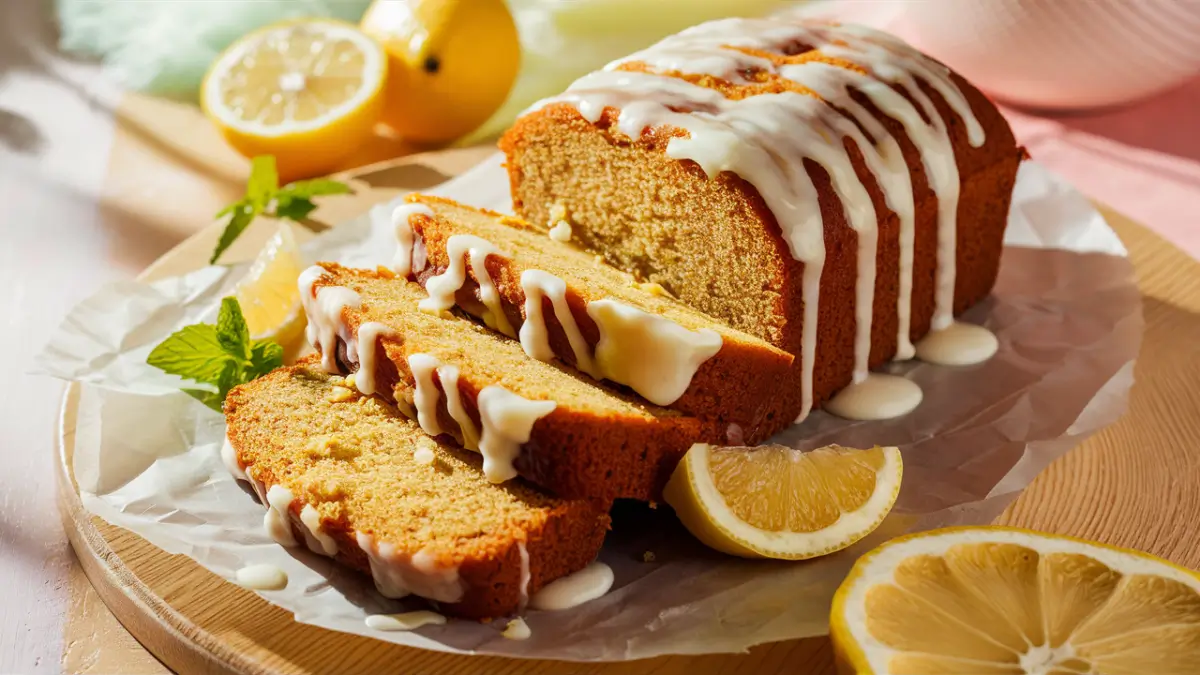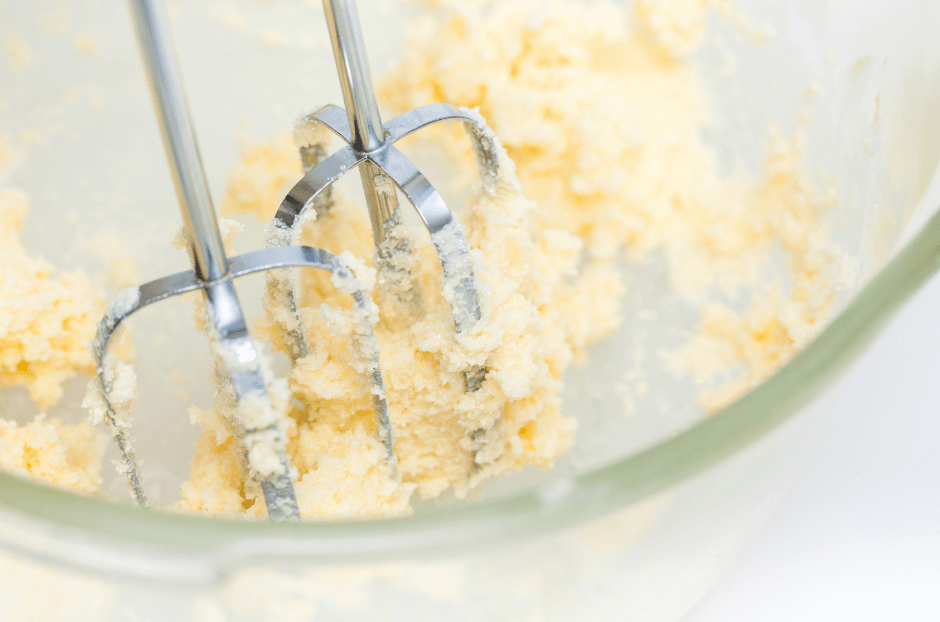
Why a Lemon Pound Cake for Father’s Day?
When it comes to celebrating Father’s Day, choosing the right treat is essential. A lemon pound cake for Father’s Day is an excellent choice because it combines the fresh, tangy flavor of lemons with the rich, buttery goodness of a traditional pound cake. This combination is sure to please any dad’s palate. Plus, the bright lemon flavor is perfect for a warm June celebration, adding a refreshing touch to your Father’s Day festivities.
Overview of Lemon Pound Cake
Lemon pound cake is a dense, moist cake flavored with lemon zest and juice. It’s known for its golden crust and soft, rich interior, making it a perfect celebratory cake for Father’s Day.
What distinguishes a pound cake from a regular cake?
Pound cake, beloved for its rich, buttery flavor and dense texture, stands out from other cakes due to its traditional recipe and preparation methods. This cake is made with a pound of flour, butter, sugar, and eggs, so this cake doesn’t rely on leavening agents like baking powder or soda. Instead, the air whipped into the butter, sugar, and Eggs give pound cake its characteristic height and texture. This contrasts with regular cakes, which often use leavening agents to achieve a lighter, fluffier consistency. The result? A pound cake that’s wonderfully rich and velvety, perfect for those who appreciate a more filling dessert.
What Does Lemon Juice Do to a Cake?
Lemon juice isn’t just for adding a tangy flavor; It is a crucial aspect of the baking science behind your cake. When added to a cake, lemon juice interacts with the baking soda or powder, promoting a chemical reaction that produces carbon dioxide. The cake rises and becomes fluffier due to this reaction. Additionally, lemon juice’s acidity works to tenderize the gluten in the flour, resulting in a moist and tender cake. So, when aiming for a flavorful cake with a delicate crumb, a splash of lemon juice can make all the difference!
Why is a cold oven the secret to a better-Lemon pound cake?
Begin baking your pound cake in a cold oven is counterintuitive. Still, it’s a baker’s secret that can lead to incredibly moist and evenly cooked results. Unlike most cakes that need a preheated oven, placing a pound cake into a cold oven allows it to heat slowly, which helps the cake rise more gradually. This slower rise encourages a finer crumb structure without the risk of over-browning or a peaked center. The gentle heat lets the outer edges and the center of the cake cook more uniformly, producing a perfectly textured pound cake that’s golden and tender from edge to center.
Is It Better to Make Lemon Pound Cake with Butter or Oil?
Choosing between butter and oil in baking can significantly affect your cake’s flavor and texture. Butter is typically the go-to choice for pound cakes because it imparts a rich, creamy taste that oils can’t match. Butter also helps achieve the dense yet tender texture that pound cakes are known for. However, oil has its merits; it can make the cake moister and extend its shelf life. Butter is your best bet if you prioritize flavor and texture, typical of classic pound cakes. If moisture is your main concern, especially in drier climates or cakes that need to last several days, oil might be the better choice.
Which is Better for Pound Cake: Cake Flour or All-Purpose Flour?
The type of flour you use in your pound cake can affect its texture dramatically. Cake flour, with its lower protein content, makes for a finer, lighter, and softer crumb, which can elevate the elegance of your pound cake. On the other hand, all-purpose flour provides a slightly denser structure, which is traditional for pound cakes. If you’re looking for that classic pound cake texture, stick with all-purpose flour. However, you prefer a lighter cake that respects a pound cake’s traditional moisture and buttery taste. In that case, cake flour might be the way to go. Either way, you’re in for a delightful treat!
Can lemon juice be included in the cake mix?
Absolutely! Adding lemon juice to your cake mix can transform a standard cake into a refreshingly citrusy dessert. Not only does it enhance the flavor with a natural lemon zest, but it also contributes to a more tender and moist texture. A tablespoon or two can make the entire cake look more appealing. When adding lemon juice to a cake mix, consider slightly reducing the amount of other liquids to maintain the batter’s balance. This simple tweak can make your cake stand out with a fresh, zesty flavor that’s especially perfect for spring and summer celebrations.
Tools to make the best Lemon Cake for Father’s Day
You’ll need a few essential baking tools:
- A standard loaf pan (9×5 inches)
- Electric mixer or whisk
- Mixing bowls
- Measuring cups and spoons
- Zester and juicer for lemons
- Cooling rack
Tools and Equipment
If you need specific baking tools, you can easily substitute other tools. For example, a hand whisk can replace an electric mixer for creaming butter and sugar.
Preparing the Ingredients
Measuring Techniques
Accurate measuring is vital to the perfect cake. Use a kitchen scale for precision or the spoon-and-level method for measuring flour.
Prepping Lemons for Flavor
For the best flavor, use fresh lemons. Grate only the yellow zest to avoid the bitter white pith, and squeeze the juice freshly for use in the batter.

Common Baking Problems and Solutions
Sinking Middles often occur when the cake is underbaked, or too much leavening agent is used. Ensure your oven is calibrated correctly. The cake should be baked until a skewer inserted into the center is free of batter residue. Do your best to keep the oven door closed as much as possible, as fluctuations in temperature can cause the cake to collapse.
Tough Crusts: A crust that is too hard can result from overbaking or an overheated oven. Prepare to bake the cake according to the recommended temperature and monitor the time to prevent this. If your oven is too hot, think about lowering the temperature to 10-15 degrees.
Vegan and Gluten-Free lemon pound cake
For a vegan version of lemon pound cake, use plant-based butter and a reliable egg substitute such as flax eggs (1 tablespoon ground flaxseed mixed with three tablespoons water per egg).To satisfy gluten-free requirements, replace all-purpose flour with a gluten-free flour substitute. Mix gently to avoid overworking the gluten-free flour, which can make the cake dense.
Adjusting Lemon Pound Cake Recipe for Different Sizes
When adjusting the size of your pound cake, keep the oven temperature the same, but change the baking time. For mini-pound cakes, start checking for doneness much earlier. Using a scale to divide the batter evenly can ensure all your cakes are uniform and bake consistently.
Optional Add-Ons
- 1/2 cup sour cream (for extra moisture)
- One teaspoon of almond extract (for added flavor)
Tools Needed For Lemon Pound Cake
Baking Essentials
- Mixing bowls
- Electric mixer or stand mixer
- Measuring cups and spoons
- Whisk
- Spatula
- 9×5 inch loaf pan
Optional Tools
- Microplane zester
- Parchment paper
- Cooling rack
Preparing the Ingredients
Measuring Ingredients Accurately
Accurate measurements are crucial for a successful bake. For dry ingredients, use measuring cups and a liquid measuring cup for wet ingredients.
Mixing the Batter

Creaming Butter and Sugar
Stir the softened butter and granulated sugar together until fluffy. This process incorporates air, giving the cake its rise.
Adding Eggs and Flavorings
Add the eggs one by one, beating them well after each addition. Stir in lemon zest and the vanilla extract for a burst of flavor.
Incorporating Dry Ingredients
Sifting Flour
Put your flour, baking soda, baking powder, and salt together through a sifting process. Add baking soda, flour, powder, and salt to a bowl, then mix them. By sifting, the flour is aerated, and any lumps are removed.
Combining Wet and Dry Ingredients
Alternatively, incorporate the dry ingredients and milk into the butter mix ( beginning and ending with the dry ingredients). Mix until all ingredients are combined to prevent overmixing.
Adding Lemon Flavor
Using Lemon Zest
Lemon zest adds a concentrated citrus flavor. Use a microplane zester for fine, fragrant zest.
Adding Lemon Juice
Fresh lemon juice enhances the lemony taste. Be sure to use freshly squeezed juice for the best flavor.
Baking the Lemon Pound Cake
Preparing the Baking Pan
Coat the loaf pan with butter or non-stick spray.
To make removal easier, ensure the pan is lined with parchment paper and has an overhang on the sides.
Oven Temperature and Baking Time
Make sure the oven is preheated to 350°F (175°C). The cake should be baked for 60-70 minutes until the center is evident when a toothpick is inserted.
PrintLemon Pound Cake for Father’s Day
You won’t believe how amazing this Lemon Pound Cake tastes! It’s bursting with lemon flavor, thanks to the zest, juice, syrup, and glaze all packed into one delightful dessert. I love how moist and flavorful this cake turns out every time! Perfect for sharing with friends and family!
- Total Time: 1 hour 20 minutes
- Yield: 16 servings 1x
Ingredients
For the Cake
- 3 cups all-purpose flour, spooned into measuring cup and leveled-off with a knife
- ½ teaspoon baking soda
- ½ teaspoon salt
- 1 cup buttermilk (low-fat is fine)
- 2 tablespoons (packed) grated lemon zest
- 2 tablespoons fresh lemon juice
- 2 sticks (1 cup) unsalted butter, softened
- 2¼ cups granulated sugar
- 3 large eggs
For the Syrup
- 2 tablespoons water
- 2 tablespoons granulated sugar
- 2 teaspoons fresh lemon juice
For the Glaze
- 1 cup confectioners’ sugar
- 2 tablespoons fresh lemon juice
Instructions
- Preheat the oven to 350°F and set an oven rack in the middle position. Spray two 8½ x 4½-inch loaf pans with nonstick cooking spray. Line the long sides of the pans with parchment paper “slings” and spray lightly with nonstick cooking spray again.
- In a medium bowl, whisk together the flour, baking soda, and salt. Set aside.
- In another bowl, whisk together the buttermilk, lemon zest, and lemon juice. Set aside.
- In the bowl of an electric mixer fitted with the paddle attachment (or beaters), cream the butter and sugar on medium speed until light and fluffy, 3 to 4 minutes. Scrape down the sides of the bowl, then beat in the eggs one at a time, beating well after each addition. Scrape down the sides of the bowl again.
- With the mixer on low speed, beat in one-quarter of the flour mixture, then one-third of the buttermilk mixture. Beat in another quarter of the flour, then another third of the buttermilk mixture. Repeat with another quarter of the flour and the remaining buttermilk mixture. Finally, beat in the remaining flour mixture. Scrape down the sides of the bowl, and give a quick mix to make sure all of the ingredients are well-incorporated.
- Divide the thick batter into the prepared pans and smooth with a rubber spatula. Bake for 55 to 65 minutes, or until the top is golden and a tester comes out clean.
- Set the cakes on a cooling rack, and cool in the pans for 10 minutes. Carefully run a knife along the unlined sides of the pans to loosen the cake from the pan. Using the parchment slings, lift the cakes out of the pans and place onto the rack, leaving the parchment paper in place under the cakes. Let cool for about 1 hour.
- When the cakes are almost cool, make the syrup. Combine the water and sugar in a saucepan and bring to a boil. Remove from the heat and stir in the lemon juice.
- Gradually brush the warm syrup all over the cakes, including the sides, letting it soak in as you go.
- To make the glaze: in a medium bowl, whisk together the confectioners’ sugar and lemon juice. Add more confectioners’ sugar or lemon juice as necessary to make a thick but pourable glaze (it should be a little thicker than you’d think, about the consistency of molasses or honey). Spoon the glaze over the top of the cake, letting it drip down the sides. Let the cakes sit for about one hour to allow the glaze to set before serving.
Notes
- Zesting and Juicing Lemons: Always zest the lemons before juicing for ease.
- Mixing Ingredients: Ensure thorough incorporation by scraping down the bowl sides frequently.
- Syrup and Glaze: Apply syrup while the cakes are warm and glaze after cooling.
- Prep Time: 20 minutes
- Cook Time: 60 minutes
- Category: Dessert
- Method: Baking
- Cuisine: American
Nutrition
- Calories: 313 kcal
- Sugar: 40g
- Fat: 7g2
- Carbohydrates: 59g
- Fiber: 1g
- Protein: 4g
Keywords: #LemonButtermilkPoundCake #BakingJoy #DessertLovers #HomeBaking #CakeArt
Checking for Doneness
Using a Toothpick Test
Insert a toothpick into the center of the cake. The cake is done if it comes out clean or with a few crumbs.
Signs of a Perfectly Baked Pound Cake
A well-baked pound cake will have a golden-brown crust and a slightly domed top.
Cooling the Cake
Cooling lemon pound cake in the Pan
Leave the cake in the pan for 10-15 minutes to cool down. Doing this makes setting it faster and removing it from the pan easier.
Transferring to a Wire Rack
Place the cake on a wire rack and wait to cool completely. This keeps the bottom from becoming soggy.
Making the Lemon Glaze
Ingredients for the Glaze
- 1 cup powdered sugar
- 2-3 tablespoons fresh lemon juice
- One teaspoon of lemon zest
Preparing the Glaze
Add the powdered sugar, lemon juice, and zest to a mixing bowl until smooth and pourable.
Glazing the Cake
Applying the Glaze
When the cake cools completely, pour the lemon glaze over it and let it drip down the sides.
Letting the Glaze Set
Allow the glaze to set for a minimum of 15 minutes before slicing and serving.
Serving Suggestions
Serving the Lemon Pound Cake
Slice the lemon pound cake and serve it as is, or garnish with whipped cream or vanilla ice cream.
For a delightful treat, pair the lemon pound cake with fresh berries, a cup of tea, or a refreshing lemonade.
Securely wrap the cake with plastic and foil, then refrigerate for three months.

Freezing the Lemon Pound Cake
Father’s Day is a special occasion that calls for a special treat. A homemade Lemon Pound Cake for Father’s Day is the perfect way to show your love and appreciation. This cake is not just delicious but also a wonderful way to create lasting memories. The combination of tangy lemon and rich, buttery pound cake is sure to be a hit with everyone, especially Dad. So, roll up your sleeves, gather your ingredients, and bake this delightful Lemon Pound Cake for Father’s Day. Your effort and love will be evident in every bite, making this Father’s Day truly memorable.
FAQs
- Can I substitute fresh lemon juice with bottled lemon juice?
Fresh lemon juice provides the best flavor, but bottled can be used in a pinch. - What if I don’t have a loaf pan? You can use a bundt pan or make mini cakes using muffin tins, adjusting the baking time accordingly.
- Can I add poppy seeds to the batter? Yes, poppy seeds add a nice texture and flavor. Add about two tablespoons to the batter.
- How do I know if my cake is overbaked? If the cake is overcooked, it will become dry and crumbly. Observe the baking time and verify for doneness as instructed.
- Can I prepare the cake ahead of time? Yes, you can make it a day in advance. Store it properly to keep it fresh.
Tasty Recipes You Might Like Also
Explore more delightful recipes on our blog:
- Milky Tres Leches Cake: Dive into this moist and milky delight!
- Lemon Lavender Cake: A floral twist on your favorite lemon desserts!
- Strawberry Cheesecake Overnight Oats: A healthy and tasty breakfast option.
- Refreshing Seafood Salad: Ideal for a light and fresh meal.
- Unique Oatmeal Chocolate Chip Cookies: Delight in these special treats.


